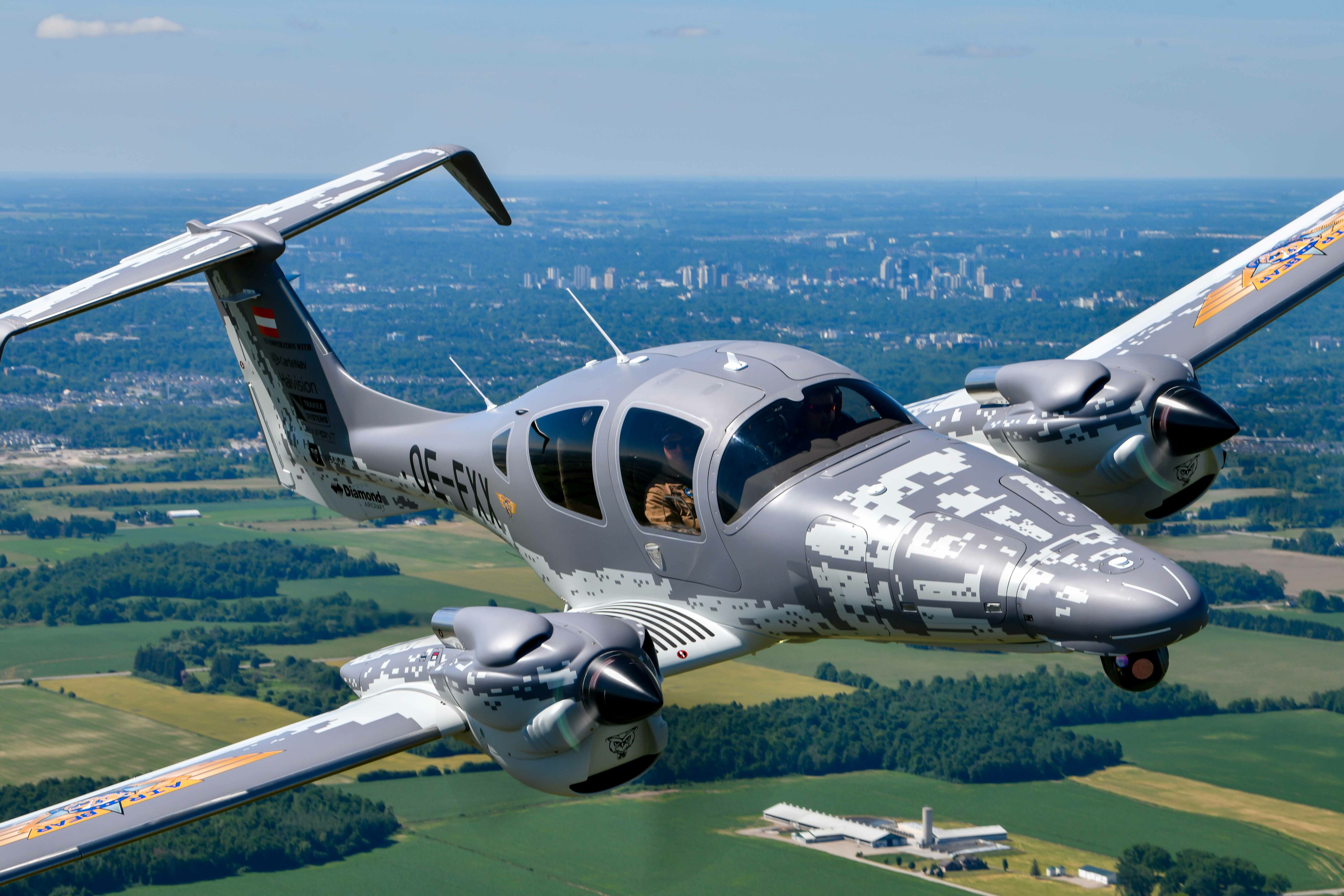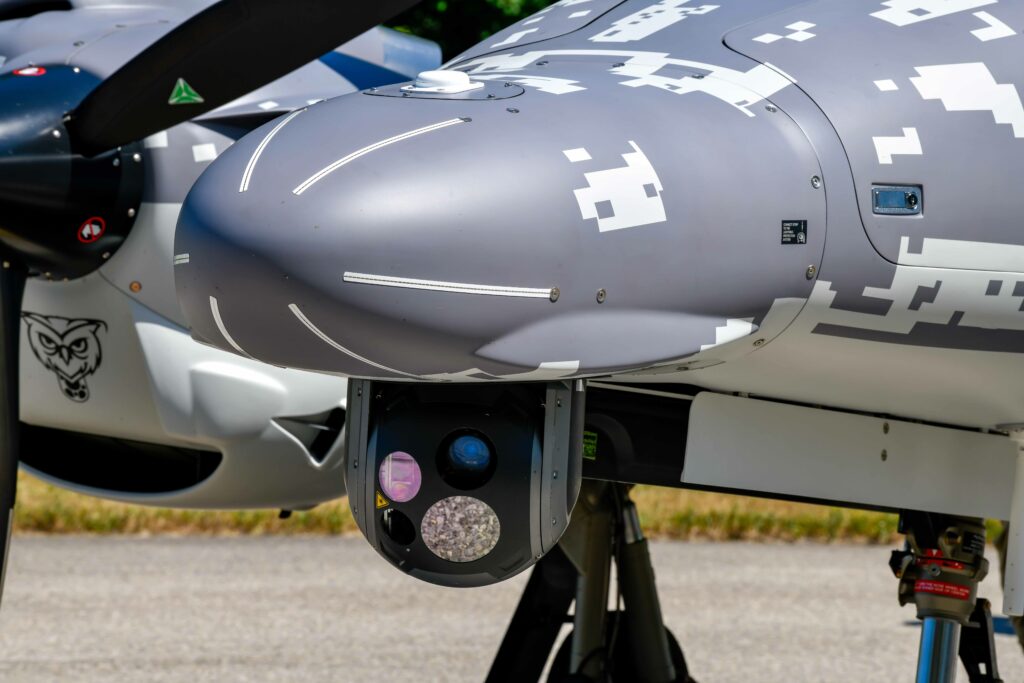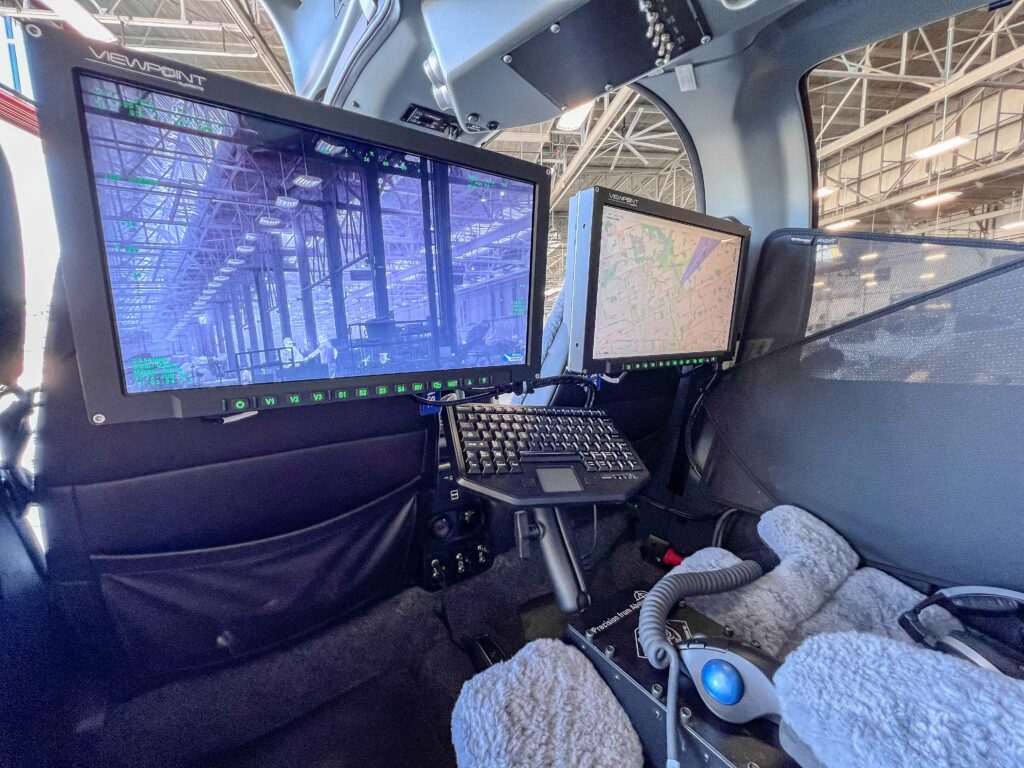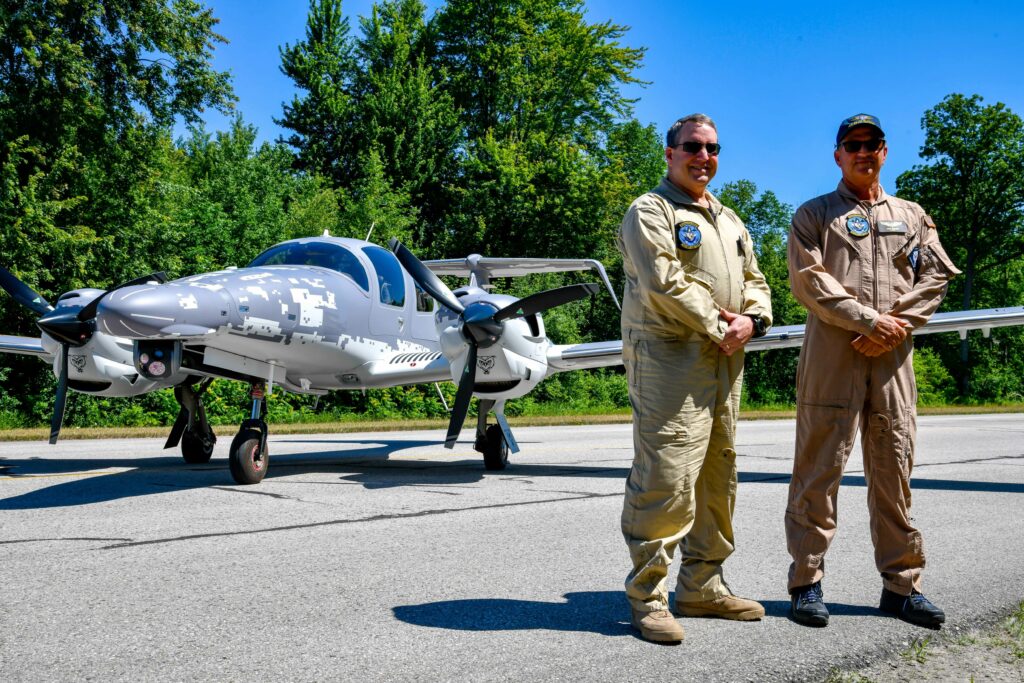Estimated reading time 13 minutes, 37 seconds.
For decades, helicopters have been the most common aircraft platform used by police air support units. But it hasn’t always been that way. There was a time, about a century ago, when fixed-wing aircraft were the norm in police aviation. The switch to helicopters came after the Second World War, and that was thanks to advancing technology and the versatility of rotary-wing aircraft.
However, the days of police units flying 500 feet above ground level in a helicopter may soon be behind us. Times — and technology — are changing, and the economics of flight have become increasingly important. It’s no secret that helicopters are expensive to operate, and budget cuts are a reality. For some airborne law enforcement operators, a light fixed-wing aircraft could be the key to both capability and affordability.
Enter Diamond Aircraft with its special mission flagship aircraft, the DA62 MPP (multi-purpose platform). The aircraft is taking surveillance to the next level with increased performance, space, and capability – all while being more cost-effective.
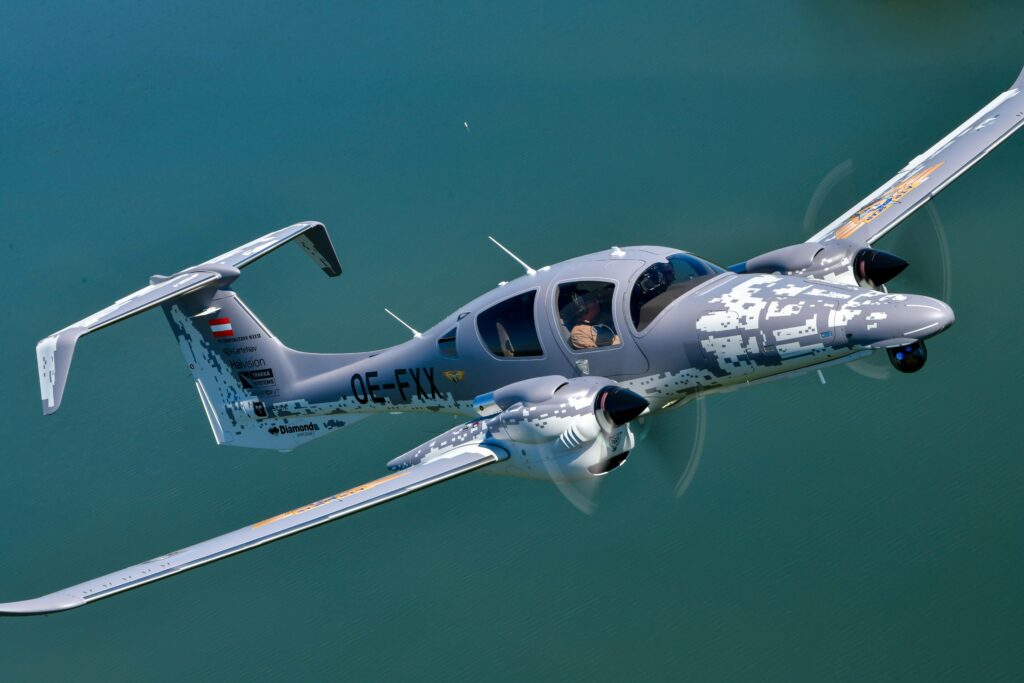
Mission Ready
In late May, Diamond Aircraft Austria announced that the DA62 MPP would be touring North America this summer.
While the MPP platform is suitable for several mission types — including search-and-rescue (SAR); coastline and border patrol; disaster management and firefighting; and infrastructure and environmental monitoring — Diamond was especially hoping to show airborne law enforcement operators in the U.S. that its fixed-wing platform is superior to the rotary-wing platforms traditionally used in the sector.
From early July to September, the aircraft visited some 25 cities, circling counter-clockwise around the U.S. At the controls for the duration of the tour was Air Bear Tactical Aircraft pilot, John Nielsen, with tactical flight officer (TFO) Steve Pierce operating the mission equipment. (California-based Air Bear is the sole DA62 MPP dealer for the U.S.)
Equipped with the Garmin G1000 NXi glass cockpit, with a fully integrated GFC700 autopilot, the DA62 MPP is based on its predecessor, the DA42 MPP. Like its predecessor, the DA62 MPP is capable of accommodating one to two pilots and one to two operators, but the 62 is roomier and has a greater total payload of 1,566 pounds (710 kilograms). Diamond began working on the STCs for the DA62 MPP right after the civilian version was introduced, and achieved certification in 2019.
The DA62 MPP demo aircraft was configured specifically for airborne law enforcement, and Air Bear’s Nielsen and Pierce were responsible for demonstrating the aircraft’s features and competitive advantage to potential customers for the duration of the tour.
The demo ship is outfitted with an impressive lineup of mission equipment, including the EO/IR sensor TrakkaCam TC-300 from Trakka Systems; HDX-1100 Line-of-Sight Downlink from Vislink; Makito X4 Video Encoder from Haivision; and AIMS-ISR Mission Software from CarteNav.
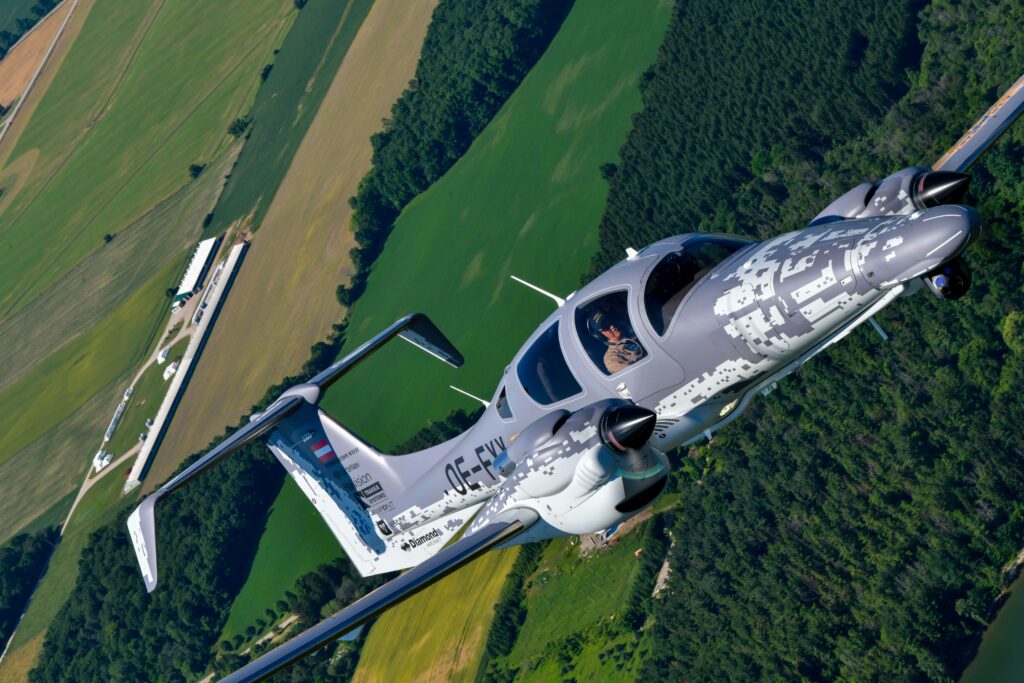
However, Mario Spiegel, special missions representative at Diamond Aircraft Austria, said the DA62 MPP can be outfitted with a variety of equipment.
“There is no fixed configuration,” he said. “The DA62 MPP has many STCs, which allows us to install different kinds of equipment that fit within the pre-certified envelope of the STC.
“In the nose, for example, we can install any kind of camera that’s smaller than 16.5 inches in diameter and weighs less than 65 kilograms,” he added. “So whatever fits within this envelope, we can install and certify ourselves. So that makes us pretty flexible.”
The demo aircraft was configured to be a law enforcement workhorse. With the TrakkaCam TC-300, a TFO could read the license plate of a car from 3,000 to 6,000 feet above ground level, as if it were right in front of them.
But the big selling feature to the law enforcement sector, said Spiegel, is the aircraft’s low operating costs. “We’re operating the MPP for around US$200 per hour, and most helicopters don’t even take off for $200.”
The DA62 MPP is powered by two, 180-horsepower Austro AE330 jet fuel engines. The aircraft’s max cruise speed is 192 knots TAS, but at 45 percent power (126 kts TAS), each engine burns just nine US gallons of fuel per hour. At loiter speed (35 percent power), the fuel burn decreases to 7.4 US gallons per hour. This means range is not an issue, as the aircraft is capable of being airborne for a maximum of 11.7 hours.
“The crew can go up with full fuel tanks and stay on target for an entire shift,” said Spiegel.

He also noted: “We are independent of the 100 Low Lead issue that the FAA is now raising. So, if they ban 100 Low Lead anytime in the next few years, we are not affected at all.”
A capable surveillance aircraft, the MPP special mission aircraft was designed with stealth in mind. The exhaust systems are mounted over top of the engines, which allows it to be quieter compared to traditional aircraft. At 1,000 feet, the sound associated with the aircraft measures at just 70 decibels. This is important for airborne law enforcement operators who are trying to remain discreet.
While the DA62 MPP offers many benefits over helicopters in the airborne law enforcement role, Spiegel said the biggest challenge from a sales perspective is convincing helicopter pilots to fly a fixed-wing aircraft.
“But with the budget cuts that many programs are experiencing right now, there’s a need to look for more cost-efficient platforms,” he said. “So, we are definitely getting more and more interest from law enforcement units . . . especially considering the MPP’s super-efficient jet fuel engines.”
The base price of the aircraft, including the supplemental type certificates (STCs), is roughly US$1.67 million. “If you add options like weather radar, deicing, air conditioning, etc., you end up somewhere around US$1.9 million,” said Spiegel.
While the type certificate for the DA62 resides with Diamond’s London, Ontario, facility, the STCs for all of the MPP modifications are with the airborne sensing division at Diamond’s Austria location. This means that all DA62 MPP aircraft are currently being built in Austria.
Spiegel explained: “They’ll take a regular civilian DA62 airframe and they’ll apply all the STCs and make it very mission specific to the customer that’s ordered the airplane.”
Spiegel, who himself has had the opportunity to fly the DA62 MPP, said the aircraft is “so easy and forgiving to fly. When you compare it to conventional twin-piston aircraft where people say the second engine just brings you to the site of the accident (if you have an engine failure), that’s not the case in this aircraft.”
He continued: “It has FADEC-controlled engines, so you cannot do anything wrong to the engines. As well, there’s an automatic integrated run-up check; there is no hot start procedure, it’s push-to-start, like in a car; and it’s overall super easy to operate.”
In the Real World
Although Diamond is marketing the DA62 MPP primarily to airborne law enforcement operators, a demo flight last fall proved how capable the aircraft is in a SAR role, too.
In October 2021, Diamond undertook a series of DA62 MPP demonstrations out of Ostend, Belgium, with a focus on a surveillance and SAR capability. This particular demo aircraft was equipped with CarteNav’s AIMS-ISR mission management system, a Trakka EO/IR turreted sensor, and Sentient Vision System’s ViDAR VMS-5 surveillance pod.
On day two of the demo, an emergency call came in regarding “a small boat transporting 24 migrants” in the North Sea “off the coast of Zeebrugge.” Four of the migrants were reported to be in distress.
“Having performed a demonstration with the DA42 MPP for the Coast Guard the day before, October 27th’s demonstration was set to be a routine one,” said CarteNav, which is based out of Halifax, Nova Scotia. “Suddenly an emergency phone call from the Belgian Maritime Rescue and Coordination Center thrust the aircraft into action.”
Diving into the rescue operation, the fast-thinking DA62 MPP crew had the aircraft readied and airborne in under 15 minutes. Their only objective was to locate the lost migrants floating in an unknown location in the North Sea.

“Adrift in the North Sea for 48 hours, after running out of fuel, the only positional information that was reported from the call for help was that they were near a massive offshore wind farm,” said CarteNav’s director of marketing, Trevor Bradley.
Inclement weather forced the special missions aircraft to fly at 1,000 feet at 120 knots. Just 20 minutes after takeoff, the small dingy containing all 24 people was located, “thanks to the collaboration between Sentient Vision’s ViDAR and Trakka Systems’ EO/IR camera, all under CarteNav’s AIMS-ISR mission management system software.” (ViDAR stands for Visual Detection and Ranging, and according to Sentient, it’s the world’s first optical radar system.)
The DA62 MPP crew shared the location of the dingy with the Belgian Coast Guard, which allowed a Coast Guard NH90 helicopter to provide assistance in the rescue. Of the 24 migrants, five were airlifted to safety, and the rest were transported to land by boat.
“New technology sensors are getting smaller and more lightweight. So, you get better capability at [a more practical] weight and size, which obviously benefits a relatively small aircraft,” said Sentient’s senior integration engineer, Gavin Edwards. “We can literally do the same job as a big aircraft for a fraction of the cost. We’re [trimming] down [what would normally be] a 90-minute search pattern to four-and-a-half minutes, and we can do that every single time.
“We weren’t there 10 years ago. But, we’re very much there today.”
With files from Natasha McKenty.
